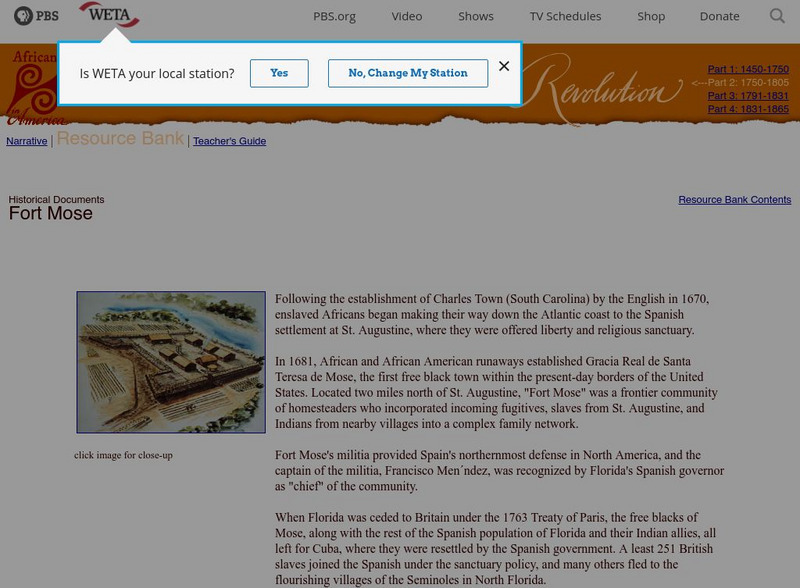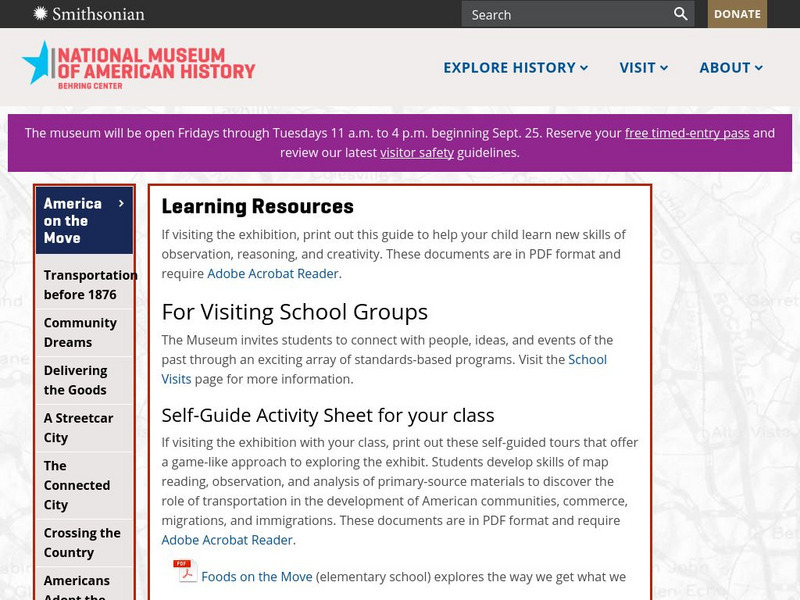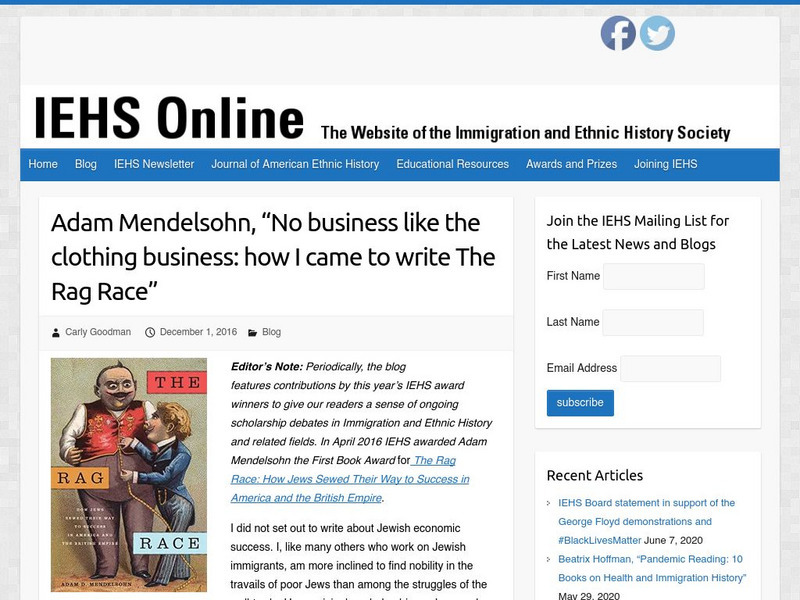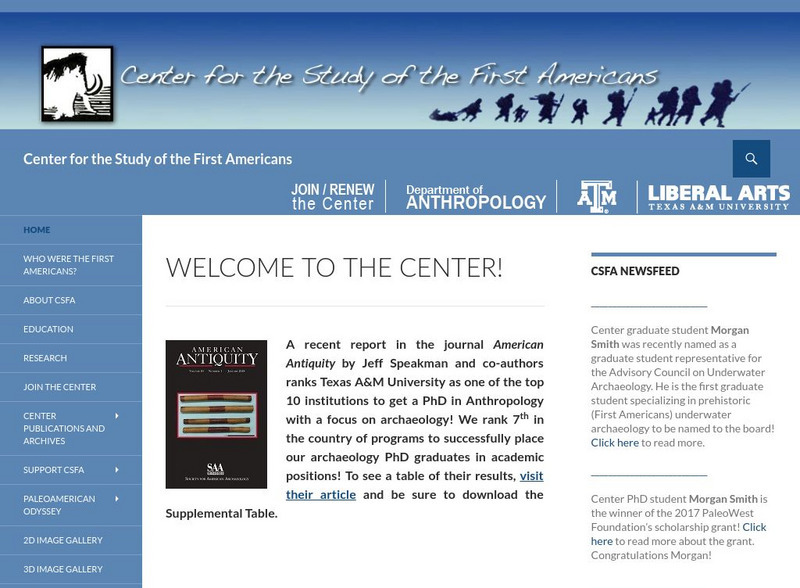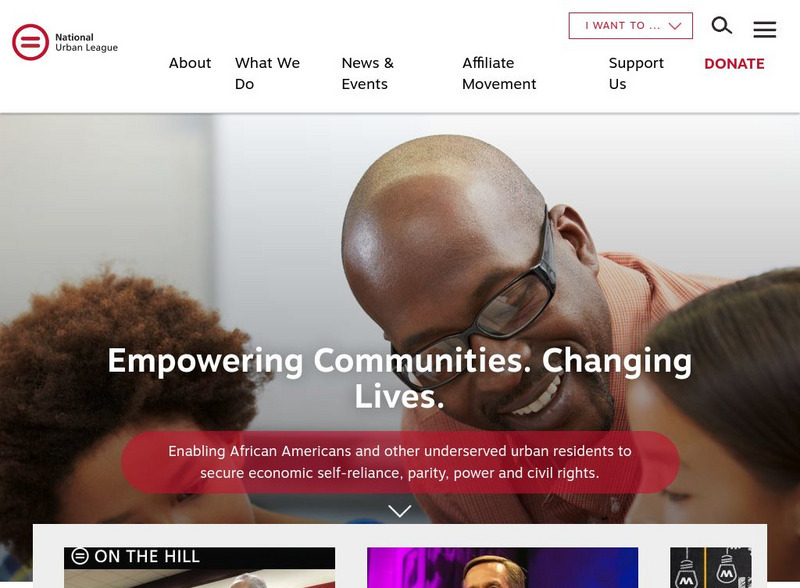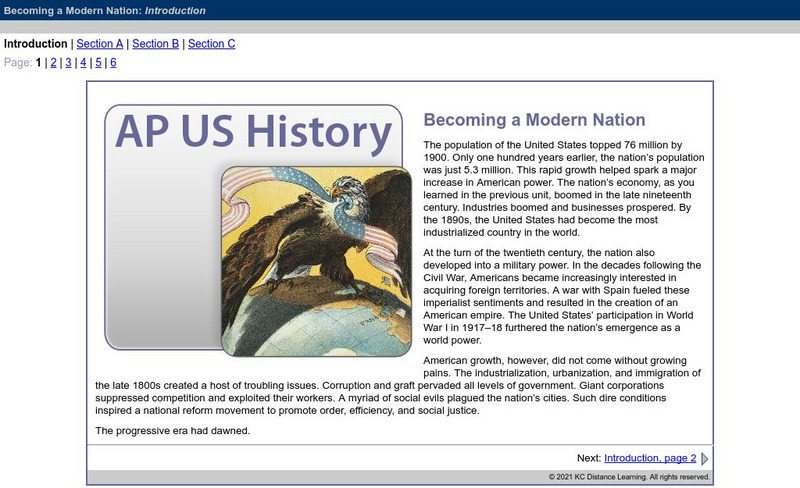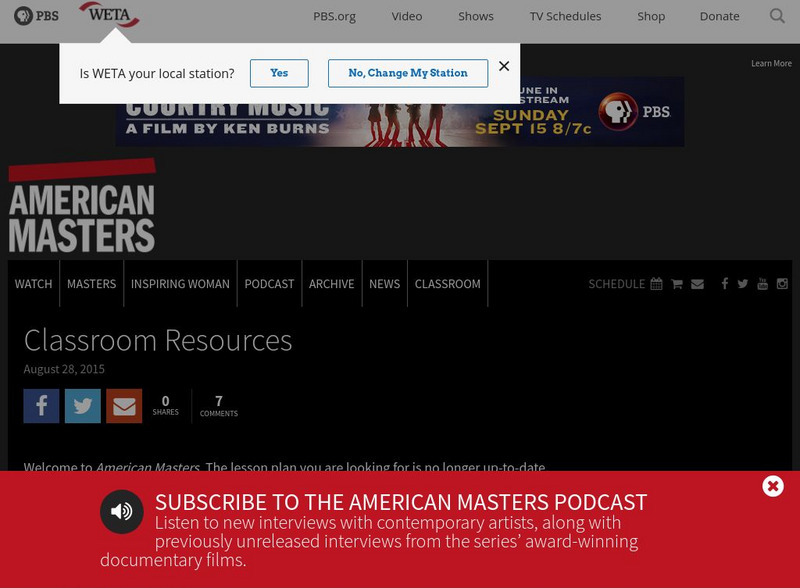PBS
Africans in America: Fort Mose
This website from PBS describes how Fort Mose was established by runaway slaves in Spanish Florida. It also explains what happened to the inhabitants after Spain lost control of Florida.
Smithsonian Institution
National Museum of American History: Learning Resources
This activity guide accompanies the exhibition America on the Move and provides documents and activities that students can use to build a deeper understanding of how transportation shaped American commerce, communities, landscapes, and...
Houghton Mifflin Harcourt
Holt, Rinehart and Winston: World Atlas: United States
Features a detailed map of the United States with some basic facts. Click on each state name to get even a more detailed map and information.
Gilder Lehrman Institute of American History
Gilder Lehrman Institute: Immigration and Migration: Timeline and Terms
[Free Registration/Login Required] An interactive look at court cases that deal with the rights of immigrants between 1876 and 1901.
Other
Memorial Foundation of the Germanna Colonies in Virginia: Germanna
This resource povides historical information about the German immigrants who settled German settlements in Virginia.
Curated OER
Educational Technology Clearinghouse: Maps Etc: Norse America, 861 1285
A facsimile of a map from the works of Carl Christian Rafn (1837) showing Iceland, Greenland, and the eastern portion of North America. The map shows the probable areas of pre-Columbian migration and exploration of the Norse from Iceland...
Henry J. Sage
Sage American History: The Puritans of New England
A description of religious strife and factions in the 17th Century. Provides a detailed and comprehensive account of the Puritans, their life and culture, as they migrate to America and establish themselves in New England.
Smithsonian Institution
National Museum of Natural History: American Mammals: Tundra Vole
Tundra Voles have the northernmost distribution of any North American species of Microtus. They are widespread in northern latitudes in Eurasia, too, where they are known as Root Voles, and probably migrated to North America across the...
Countries and Their Cultures
Countries and Their Cultures: Multicultural America: Croatian Americans
Provides an overview of the traditional culture and lifestyle of Croatian Americans. (Note: Content is not the most current.)
Immigration and Ethnic History Society
Iehs: Adam Mendelsohn, "No Business Like the Clothing Business: The Rag Race"
This article focuses on why the Jews who migrated to the US after WWII became more prosperous than those who settled in England. It discusses many factors, including the clothing industry and timing.
Other
Center for the Study of the First Americans
This institute attempts to provide answers to the questions: when did the first people enter the Americas, who were the first immigrants, where did they come from, and how did they get here?
American Institute of Biological Sciences
Action Bioscience: Mitochondrial Dna Clarifies Human Evolution (2001)
DNA of the mitochondria has most commonly been used to construct evolutionary trees. New field of population genetics hopes to resolve important questions in migration theories that involve Aboriginies in Australia, North America, and...
Other
Winthrop Society
At the online home of the Winthrop Society find information on the early settlers of Massachusetts, the ships that brought them to America, the documents that the colonists lived by, and the Great Migration of Puritans to the New World.
US National Archives
Nara: Teaching With Documents: Photographs of the 369th Infantry
Background information on the African American troops in the 369th Infantry accompanied by teaching activities that allows students to analyze photographs and use the information in many curricular connections.
Smithsonian Institution
Encyclopedia Smithsonian: Paleoamerican Origins
This detailed article from the Encyclopedia Smithsonian lays out the theories and evidence of who were the earliest inhabitants of North and South America. Beginning with the traditional theory of migration using the land bridge, and...
Annenberg Foundation
Annenberg Learner: Bridging World History: Global Industrialization
Europe and America were far from alone in the quest for industrialization. This unit explores just how far the age of industry impacted the world.
Other
National Urban League Home Page
The homepage of the National Urban League, whose mission "is to enable African Americans to secure economic self-reliance, parity and power and civil rights."
Department of Defense
Do Dea: Ap Us History: Unit 6: Becoming a Modern Nation
This extensive learning module examines the role of large-scale industrialization, urbanization, and mass migrations in creating new demands on government and social organizations to design reforms, and looks at the global and domestic...
University of Groningen
American History: Outlines: The First Americans
Brief overview on the history and theory of migration of the first inhabitants of North America. Links to Wikipedia for definitions are embedded in the text.
Khan Academy
Khan Academy: Us History: 1865 1898: The Gold Rush
The 1848 discovery of gold in the territory of California prompted 300,000 hopeful prospectors to flood into the region, altering it forever.
PBS
Pbs American Masters: Scientific American: Following Muddy's Trail
This site has a lesson plan on Muddy Waters focused on the American Masters documentary about him. Parallels the Great Migration with the growth of the blues music movement in America. Click on Muddy's name to access a detailed biography...
University of Groningen
American History: Essays: Development of the Indigenous Tribes
Essay on the development of early indigenous tribes in the Americas. Author discusses how tribal culture developed in South America prior to Columbus.
San Jacinto Museum of History
San Jacinto Museum: How Did the Battle of San Jacinto Change the World?
This is an interesting look at the impact of the Battle of San Jacinto not only for the Republic of Texas, but for places in North America and in Europe. Links to additional information.
National Humanities Center
National Humanities Center: Toolbox Library: Emancipation: Liberia, Making of African American Identity: V. 1
Primary resource provides letters, statements, and photographs of free and enslaved African Americans who journeyed to Liberia to establish new lives and identities. Also includes questions for class discussion.


